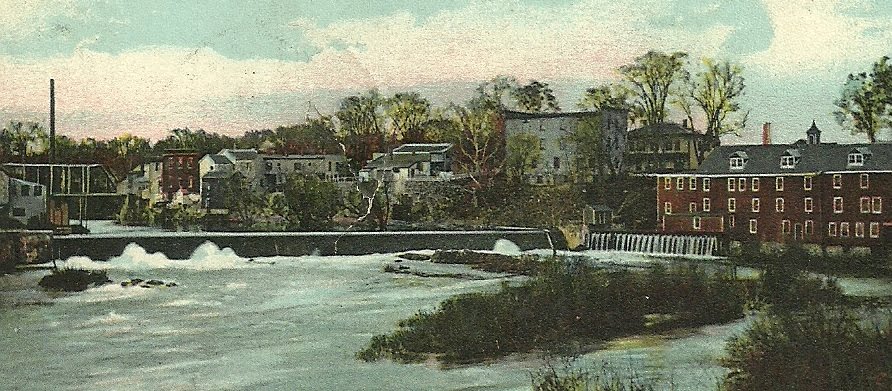This past weekend was a whirlwind of Suffrage Centennial activity for me as I participated in two events; Saturday's 1900 Suffrage Convention reenactment in Glens Falls, NY, & Sunday's Easton Political Equality Club reenactment at Easton Burton Hall in the hamlet of North Easton, NY in my home county of Washington.
The Easton Political Equality Club (hereafter referred to as "the PEC") was the first suffrage organization formed in rural Washington County, NY in 1891. Suffrage movement leaders & sisters,
Susan B. &
Mary S. Anthony kept close ties to the region where they spent much of their childhood. Mary was born in Battenville, a hamlet in the neighboring town of Greenwich. Both women taught school in the area for a few years, & some members of the PEC were their former students.
 |
| Chloe Sisson and Lucy P. Allen |
Members of the PEC were instrumental in getting Washington County women to form other political equality clubs & getting Washington County men to vote in favor of woman suffrage on November 6, 1917.
PEC members were also key informing the Easton Library, &, upon obtaining the vote, formed the Easton Book Club which is still going strong today. Because of this tie, the PEC gave their meeting minutes & other documents to the library, allowing researchers access to a treasure trove of great primary source documentation of suffrage movement activities in our area. In 2009, local historian Teri Gay published
Strength Without Compromise: Womanly Influence and Political Identity in Turn-of-the-Twentieth Century Rural Upstate New York which drew much of its focus from this collection, as did Sunday's event.
 |
| Program for the Easton PEC event 10/22/2017 |
Kate Dudding portrayed Chloe Sisson & Nancy Marie Payne portrayed Lucy P. Allen as they remembered twenty-six years of suffrage activism. Greenwich Town Supervisor, & descendant of a PEC member, Sarah Skiff Idleman read a brief biography of
suffragist Lucy Stone, as members would have done.
 |
| L to R top only: Nancy Payne, Kate Dudding, Tisha Dolton |
My contribution to the program was also in keeping with the PEC meetings of more than a century ago. I sang
"America (My Country 'tis of Thee)" as they usually sang a hymn or patriotic song to begin a meeting. Likewise, I ended by leading the attendees in singing the
"Star Spangled Banner", our National Anthem.
I was also the entertainment. PEC meetings usually had musical entertainment, so I was there to sing suffrage songs, & get people to sing along! They did & when some sang harmony on the chorus of
"Arise! Brave Woman!" ("Battle Hymn of the Republic"), I smiled.
Arise! Brave Woman!
Lyrics: Nannie Parker, Tune: John Brown’s Body/ Battle Hymn of the Republic, 1910
Verse 1
Arise! Arise brave woman!
There is work for you to do;
Show the world that love is wisdom
And love’s promises are true;
Break the bonds that hold you captive
For the world has need of you
As we go marching on.
Chorus
Glory! Glory! Hallelujah!
Glory! Glory! Hallelujah!
Glory! Glory! Hallelujah!
As we go marching on.
Verse 2
Do you need a sound to rouse you?
Hear the little children cry;
Do you need a sight to stir you?
See the old who hopeless die.
Shall they call to you in misery
While you stand heedless by?
No, we’ll go marching on.
Verse 4
We will give the world fair daughters
And those daughters shall be free;
They shall stand beside their brothers
On the ground of liberty,
And the cause of right shall prosper
On the land and on the sea
As we go marching on.
Verse 5
Then arise! Arise brave woman!
There is work for you to do;
Show the world that love is wisdom
And love’s promises are true;
Break the bonds that hold you captive
For the world has need of you
And we’ll go marching on.
 |
| Photo of Tisha Dolton in the Post-Star, Tuesday, October 24, 2017 |
















